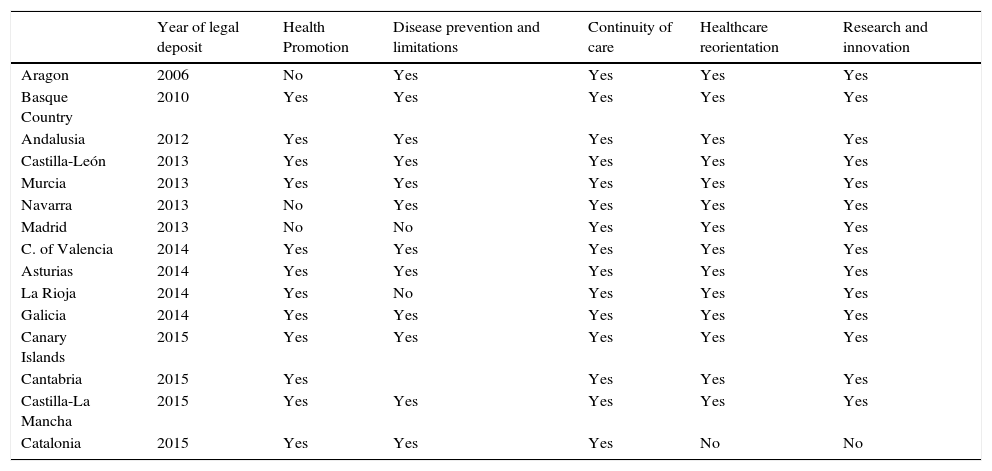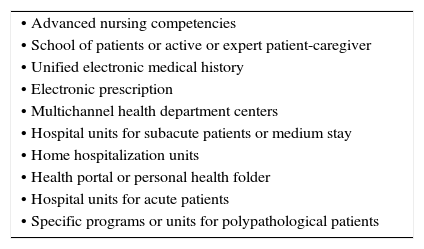Polypathological patients have specific clinical, functional, psychoaffective, social, family and spiritual characteristics. These patients are generally elderly and frail and have frequent decompensations. They frequently use healthcare resources, have significant functional impairment and have a high index of dependence. This results in a significant social impact, high mortality and a high consumption of resources. The current healthcare models have not answered these needs, which causes problems with accessibility to healthcare services, a lack of coordination among these services, a higher probability of adverse events related to polypharmacy and a high consumption of resources. In the past decade, the healthcare models have changed and are characterized by work in multidisciplinary and interlevel teams, patient self-care, the availability of tools for decision making, information and communication systems and prevention. The goal is to have prepared and proactive health teams and an informed and active patient population. The assessment of health results, processes and the costs for these programs is still based on moderate to low evidence. It is therefore not an easy task to determine the type and intensity of interventions or to determine the patient groups that could gain more benefits.
Los pacientes pluripatológicos tienen unas características clínicas, funcionales, psicoafectivas, sociofamiliares y espirituales específicas. Son generalmente de edad avanzada, frágiles, con frecuentes descompensaciones, uso frecuente de recursos sanitarios, deterioro funcional importante y un elevado índice de dependencia; de lo que se deriva un importante impacto social, mortalidad elevada y consumo de recursos. Los modelos asistenciales actuales no han dado respuesta a estas necesidades, lo que produce problemas en la accesibilidad a los servicios sanitarios, descoordinación entre estos, mayor probabilidad de eventos adversos relacionados con la polimedicación y un alto consumo de recursos. En la última década, los modelos asistenciales están cambiando y se caracterizan por el trabajo en equipo multidisciplinar e interniveles, el autocuidado del paciente, la disponibilidad de herramientas para la toma de decisiones, los sistemas de información y comunicación y la prevención. Se pretende conseguir un equipo de salud preparado y proactivo y una población de pacientes informados y activados. La evaluación de los resultados en salud, procesos y costes de estos programas, se apoya todavía en evidencias moderadas o bajas. Por ello, no es fácil determinar el tipo e intensidad de las intervenciones, ni los grupos de pacientes sobre los que pueden aportar más beneficios.
Article
Diríjase desde aquí a la web de la >>>FESEMI<<< e inicie sesión mediante el formulario que se encuentra en la barra superior, pulsando sobre el candado.

Una vez autentificado, en la misma web de FESEMI, en el menú superior, elija la opción deseada.

>>>FESEMI<<<








